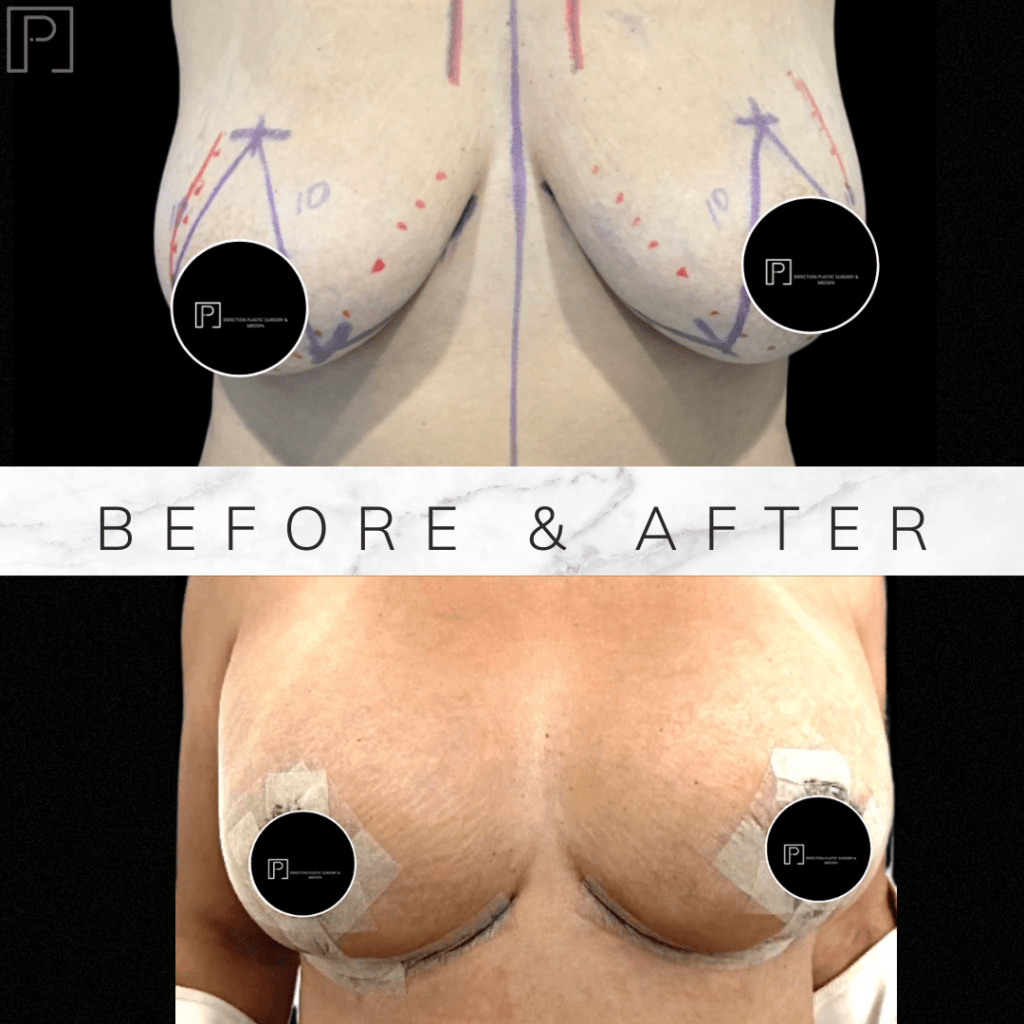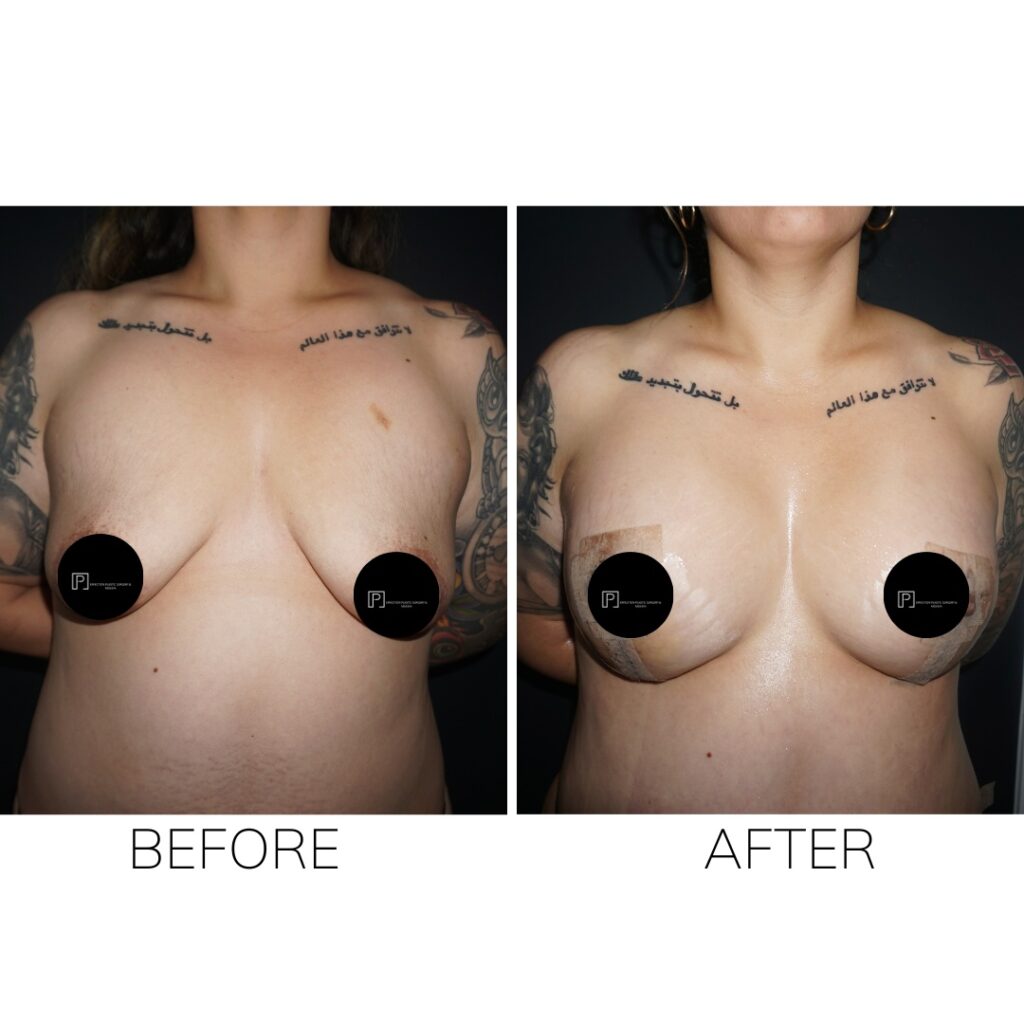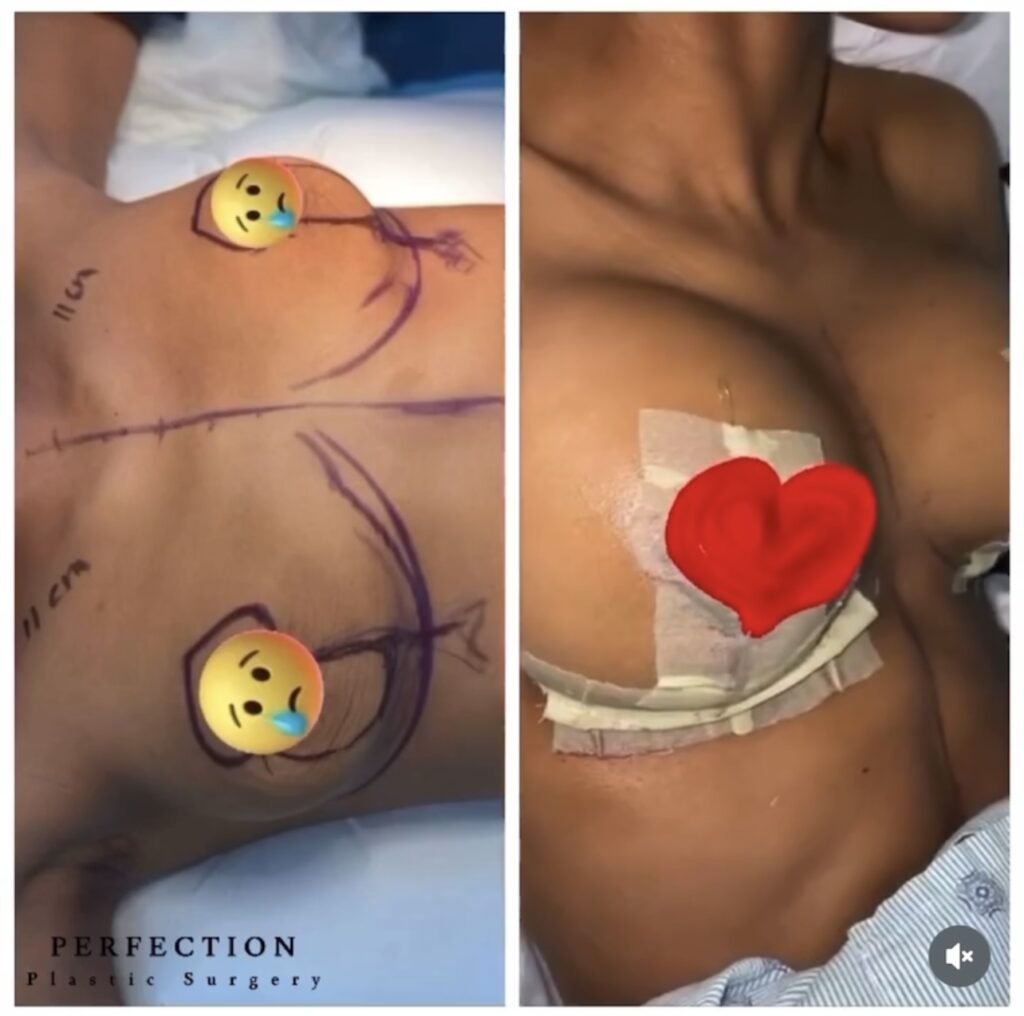
Augmentation, Reduction or Reshaping the appearance of the breast.
Mammoplasty encompasses a range of surgeries designed to reduce, augment, lift, or reconstruct the breasts. Augmentation mammoplasty typically involves placing breast implants, though fat transfer techniques are also available. Reductive mammoplasty not only reduces volume but also enhances shape, while mastopexy focuses on firming and repositioning breast tissues.
AUGMENTATION MAMMOPLASTY: BREAST AUGMENTATION/ IMPLANTS
Breast augmentation is performed to increase volume, enhance projection, and improve the shape of the breasts using implants, typically placed behind the pectoralis major muscle.
The most common approaches for inserting implants are areolar, submammary, and axillary. However, they can also be placed through the navel or abdomen during a dermolipectomy. This procedure is the most requested and performed cosmetic surgery worldwide, providing high satisfaction and significantly boosting female self-esteem.
The type of mammoplasty depends on the patient’s breast characteristics, primarily the degree of ptosis (breast drooping). Incisions are usually small, located along the edge of the areola or the breast fold. For sagging breasts, firming (mastopexy) is required, with incisions that may be circular, vertical, J-shaped, or inverted T-shaped.
Ideal candidates for breast augmentation include women with minimal breast development, significant asymmetries, appropriate weight for their height, and those experiencing discomfort due to their appearance.
Advanced Breast Augmentation for Tuberous Breasts and Post-Pregnancy Changes at Perfection Plastic Surgery & Med Spa
Patients with tuberous breasts (tubular deformity) or breasts that have changed due to pregnancy or significant weight fluctuations can benefit from breast augmentation procedures. However, women with large breasts should undergo breast reduction first to achieve the desired results.
A wide variety of breast implants are available to suit different aesthetic goals. Options range from small prostheses (200 to 300cc) with anatomical characteristics to round implants with extra-high profiles and large volumes (800 to 1000cc). Recent trends favor moderate volumes for a proportionate and natural appearance. Leading brands include Polytech, Allergan (Natrelle-CUI), Sebbin, Motiva, Eurosilicone, Johnson & Johnson (MENTOR-McGHAN), Silimed, Nagor, and Perthese. Modern implants are made from dimethylpolysiloxane elastomer in the form of a solid gel (highly cohesive or “gummy bear implants”), with longevity exceeding 30 years and warranties of 10 years or more.
Most patients recover within a week, resuming office work or university activities, with muscle pain lasting 3 to 4 days. Stitches are typically removed after 10 days, and contrary to popular belief, patients can travel by plane after their postoperative checkups.
BREAST LIFT OR MASTOPEXY
Breast Firming or Lifting is designed to lift and reposition sagging breasts due to age, pregnancy, lactation, or significant weight changes.
This procedure involves the upward displacement of the areolas and nipples, elimination of excess skin, correction of asymmetries, and discreet reduction of the breasts. To perform this surgery, an incision is made around the areola and another below the breast in the shape of a “J” or “T”, with the length depending on the degree of ptosis (drooping).
Ideal candidates for this surgery include women with or without children who experience sagging breasts, deformity, or breast asymmetries, as well as those with sequelae from previous interventions, weight loss due to bariatric surgery, postpartum changes, and even patients with implants whose breasts have descended.
Breast Firming or Lifting is an excellent option for those who want to lift their breasts while preserving a natural appearance or as a first step to correct asymmetry and sagging before placing breast implants.
The postoperative period is generally not painful but requires care. Patients should avoid lifting and driving for the first month. They can return to office work 10 to 12 days after surgery and may travel one month post-surgery. The ability to breastfeed is not affected.
REDUCTIVE MAMMOPLASTY: BREAST REDUCTION
Reduce Breast Size and Improve Comfort with Breast Reduction Surgery at Perfection Plastic Surgery & Med Spa
Breast reduction surgery can significantly reduce the size of the breasts and correct sagging, addressing issues caused by mammary hypertrophy (excessive size and weight of the breasts) which can occur from puberty (juvenile gigantomastia). This condition can be as challenging as insufficient breast development and can cause severe neck and back pain, difficulty exercising, and relationship issues.
Various reductive mammoplasty techniques can remove up to 50% of breast tissue. Most procedures involve a “J” or “T” shaped incision on the lower part of the breast. While scars are evident, patients often experience significant symptom relief and an improvement in their quality of life.
Women experiencing symptoms from overly large breasts are candidates for this procedure. However, it is essential to have realistic expectations, as the aesthetic result will differ from breast implants. We do not recommend combining this surgery with breast implants since the reduction would not be effective.
The postoperative period is generally not painful but requires care. Patients should avoid lifting and driving for the first month. They can return to office work 10 to 12 days after surgery and may travel after one month. The ability to breastfeed is not lost, although milk production may decrease, and nipple sensitivity may be altered.
GYNECOMASTIA SURGERY: MALE BREAST REDUCTION
Enlarged breasts can cause significant embarrassment and lower self-esteem in men. Gynecomastia surgery offers a solution by providing a more masculine appearance, thereby enhancing confidence and self-esteem. Male breast reduction, designed to remove enlarged breast tissue known as “gynecomastia,” is a popular procedure that helps men achieve the firm, toned chest they desire.
Gynecomastia surgery removes “man boobs” to create more attractive chest contours. This procedure is one of the most common plastic surgeries performed on men.
Common features of gynecomastia include:
- Fat deposits in the chest area
- Excess glandular tissue
- Excess breast skin
Regain your confidence with gynecomastia surgery at Perfection Plastic Surgery & Med Spa.
How is gynecomastia treated?
When gynecomastia is primarily caused by excess fatty tissue in the chest area, liposuction is typically used to permanently remove these fat cells. Small incisions are made in the folds under the breasts, and a cannula (a thin, hollow tube) is inserted under the skin to suction out unwanted fat deposits. In more extensive cases of gynecomastia, breast skin and glandular tissue may also be removed to achieve optimal results.






